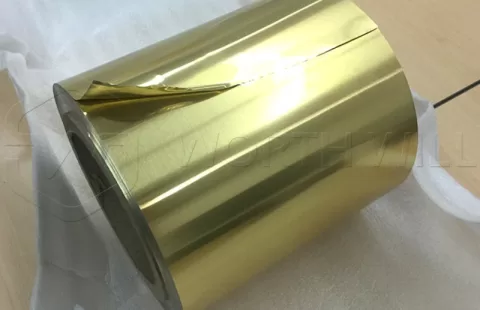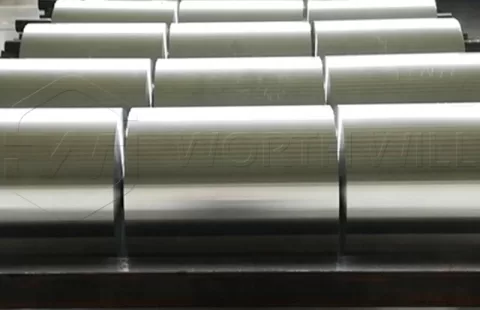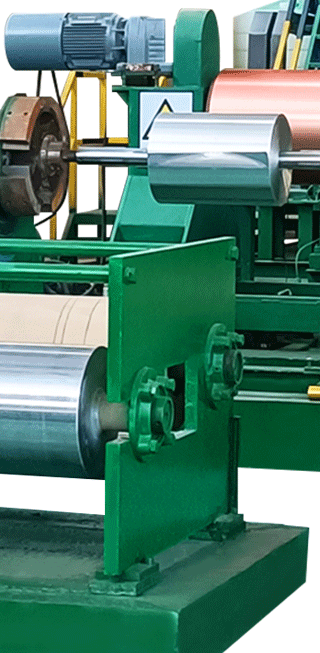
Aluminium Foil in Dishwasher
Have you ever wondered if that roll of aluminium foil in your kitchen drawer has more uses than just wrapping leftovers? It turns out, this common household item can be a surprising helper, especially when it comes to your dishwasher.
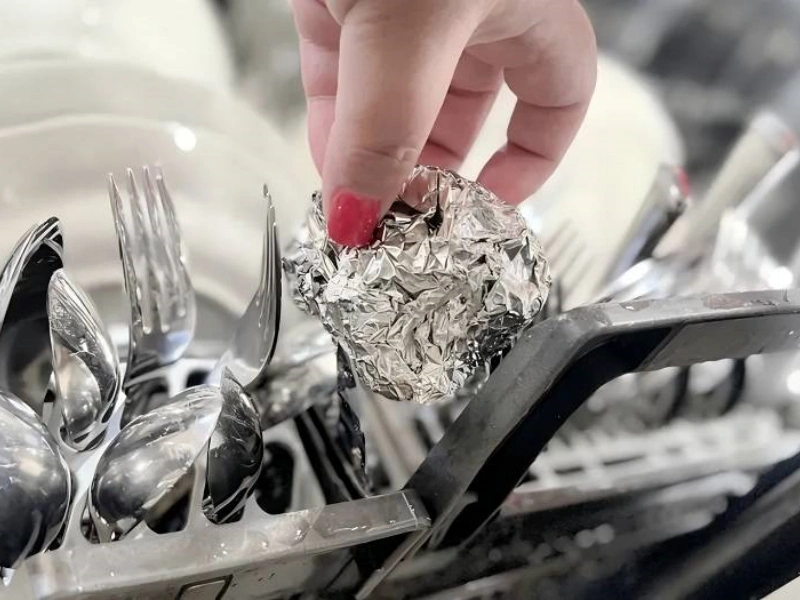

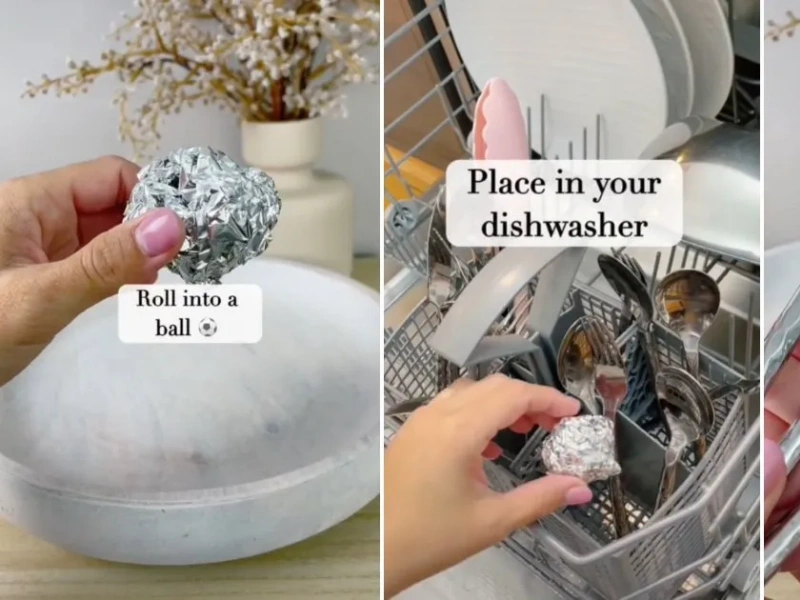
Classification of Aluminium Foil
Before we dive into its dishwasher magic, let’s understand the different types of aluminium foil you might encounter. Knowing the classification can help you pick the right kind for various tasks.
Standard Aluminium Foil
This is the most common type you’ll find in supermarkets. It’s relatively thin but strong enough for general kitchen use, like wrapping sandwiches, covering dishes, or lining baking trays. It’s perfect for most everyday tasks, including the dishwasher trick we’ll discuss.
Heavy-Duty Aluminium Foil
As the name suggests, this foil is thicker and more robust than standard foil. It’s designed for tasks that require more strength and heat resistance, such as grilling, roasting large cuts of meat, or making foil packets. While you could use it in the dishwasher, standard foil works just as well for cleaning purposes.
Recycled Aluminium Foil
Many brands now offer aluminium foil made from recycled materials. This is an environmentally friendly option, as it reduces the need for new aluminium production, saving energy and resources. Its performance is typically similar to standard foil, making it suitable for all the same uses, including your dishwasher cleaning needs.
The Alloy of Aluminium Foil
Aluminium foil isn’t just pure aluminium. It’s usually made from an alloy, which is a mixture of aluminium with small amounts of other elements. These elements are added to improve the foil’s strength, flexibility, and resistance to corrosion.
Common Aluminium Alloys in Foil
The most common alloy used for household aluminium foil is typically from the 1xxx series, such as alloy 1235 or 8011. These alloys are chosen for their excellent formability and barrier properties. They are food-safe and designed to withstand a range of temperatures, making them ideal for kitchen applications. The small amounts of iron and silicon often found in these alloys contribute to the foil’s overall performance, ensuring it holds up well whether you’re baking or giving your silverware a shine in the dishwasher.
How Does Aluminium Foil Clean Silverware in a Dishwasher?
Now, for the main event! The idea of using aluminium foil in your dishwasher might sound strange, but it’s a popular hack for one specific problem: tarnished silverware. Over time, silver items can develop a dull, dark layer called tarnish, especially if they are not used or cleaned regularly.
The Science Behind the Shine
The cleaning action of aluminium foil in the dishwasher is all about a simple chemical reaction called ion exchange. When hot water, dishwasher detergent, and aluminium foil are present with tarnished silver, an electrochemical process occurs.
The aluminium foil acts as a sacrificial anode. The sulfur compounds in the tarnish on your silverware (which is silver sulfide) react with the aluminium. The aluminium gives up electrons to the silver sulfide, converting the silver sulfide back into shiny silver metal. The sulfur, meanwhile, bonds with the aluminium, forming aluminium sulfide, which simply rinses away. This reaction is greatly helped by the hot water and the alkaline nature of most dishwasher detergents. It’s a gentle yet effective way to lift away light tarnish without harsh scrubbing or polishing.
Step-by-Step Guide: Using Aluminium Foil in Your Dishwasher
Using aluminium foil for cleaning silverware in your dishwasher is incredibly easy. Here’s how to do it:
Preparation
- Gather your tarnished silverware: This trick works best on genuine silver or silver-plated items. It won’t have the same effect on stainless steel, though it won’t harm it either.
- Take a piece of aluminium foil: A piece about 6-8 inches long is usually sufficient. You don’t need a huge amount.
- Crumple the foil: Loosely crumple the aluminium foil into a ball. Make sure it’s not too tightly packed, as you want maximum surface area exposure.
Placement
- Load your dishwasher as usual: Place your dishes and detergent in the dishwasher as you normally would.
- Add the foil ball: Place the crumpled aluminium foil ball directly into the silverware basket or anywhere in the lower rack where it can make contact with water and your tarnished silver. It doesn’t need to be in a special spot, just ensure it’s not obstructed.
Running the Cycle
- Run a normal wash cycle: Use your regular dishwasher detergent and select your preferred wash cycle. The hotter the water, the more effective the reaction tends to be.
- Unload and admire: Once the cycle is complete, unload your dishwasher. You should notice a significant reduction in tarnish on your silver items, leaving them looking much brighter and shinier.
Benefits of Using Aluminium Foil in Dishwasher
This simple hack offers several advantages for maintaining your silverware.
Easy Silverware Cleaning
The most obvious benefit is the effortless cleaning of tarnished silver. Instead of spending time hand-polishing each piece, the dishwasher and aluminium foil do the work for you while your other dishes get clean. This saves valuable time and effort.
Cost-Effective Solution
You likely already have aluminium foil and dishwasher detergent at home, making this a very inexpensive cleaning method. There’s no need to buy special silver polishes or cleaning solutions, which can add up over time.
Environmentally Friendly?
While it might seem counterintuitive, using aluminium foil this way can be considered somewhat eco-friendly. It leverages a common household item, potentially reducing the need for chemical-heavy silver polishes. Also, aluminium is highly recyclable, and many foils are now made from recycled content.
Potential Downsides and Considerations
While effective, the aluminium foil trick isn’t a cure-all, and there are a few things to keep in mind.
Not for All Metals
This method is specifically for genuine silver and silver-plated items. It will not work on stainless steel, pewter, or other metals. Using it on these materials won’t harm them, but it also won’t provide any special cleaning benefits for them.
No Substitute for Regular Cleaning
While great for light tarnish, this method might not fully restore heavily tarnished silver. For very old or deep tarnish, professional cleaning or a dedicated silver polish might still be necessary. It’s best used as a regular maintenance trick to keep your silver gleaming. Also, it only addresses tarnish; it doesn’t clean food residue or general grime.
Other Clever Uses for Aluminium Foil in the Kitchen (and Beyond)
Aluminium foil is remarkably versatile. Beyond its surprising dishwasher use, it has countless applications in and around the home.
Cooking and Baking Applications
- Roasting: Creating foil packets for vegetables or fish locks in moisture and flavor.
- Lining Baking Sheets: Makes cleanup a breeze and prevents sticking.
- Grilling: Used to wrap delicate foods like fish or vegetables on the grill.
- Keeping Food Warm: Wrapping dishes in foil helps retain heat.
- Preventing Over-Browning: Loosely covering pies or casseroles prevents the crust from burning.
Household Cleaning Hacks (beyond the dishwasher)
- Sharpening Scissors: Cut through several layers of foil to sharpen dull scissor blades.
- Cleaning Iron Soleplates: Rub a crumpled ball of foil over a warm iron to remove sticky residue.
- Scrubbing Pots and Pans: A crumpled ball of foil can act as a gentle abrasive for stubborn food on cookware (use with caution on non-stick surfaces).
- Removing Rust: Lightly rub rust spots with a crumpled foil ball and a little water or soda.
Craft and Art Projects
- Sculpting: Foil can be easily molded into various shapes for art projects or as an armature for clay.
- Decorations: Creating shiny, reflective decorations for parties or holidays.
- Polishing Chrome: A wadded-up piece of foil can polish chrome fixtures to a shine.
Frequently Asked Questions (FAQs) about Aluminium Foil and Dishwashers
Q: Will aluminium foil damage my dishwasher?
A: No, using a crumpled ball of aluminium foil in your dishwasher will not damage the appliance itself. It’s a safe and effective hack.
Q: Can I use this for stainless steel cutlery?
A: While it won’t harm stainless steel, this trick is specifically for removing tarnish from silver and silver-plated items. It won’t have a noticeable effect on stainless steel.
Q: How often should I use this trick?
A: You can use it whenever you notice your silver silverware starting to tarnish. For regular maintenance, once every few washes that include silver items can be sufficient.
Q: Does the type of dishwasher detergent matter?
A: Most standard dishwasher detergents are alkaline enough to facilitate the reaction. There’s no need for special detergents.
Q: What if my silver is heavily tarnished?
A: For very heavy tarnish, this method might not be enough. You might need to resort to traditional silver polish or professional cleaning for best results.
Conclusion
The humble roll of aluminium foil is truly a versatile tool in any home. Its surprising ability to tackle tarnished silverware in the dishwasher is a testament to simple chemistry and practical ingenuity. By understanding the classification and alloy of aluminium foil, and how it interacts with tarnish, you can easily restore the shine to your beloved silver items. Beyond the dishwasher, its myriad uses in cooking, cleaning, and crafting make it an indispensable household staple. So, next time you reach for that roll, remember its hidden potential to make your life a little easier and your silverware a lot shinier.
Leave a Comment
You must be logged in to post a comment.

